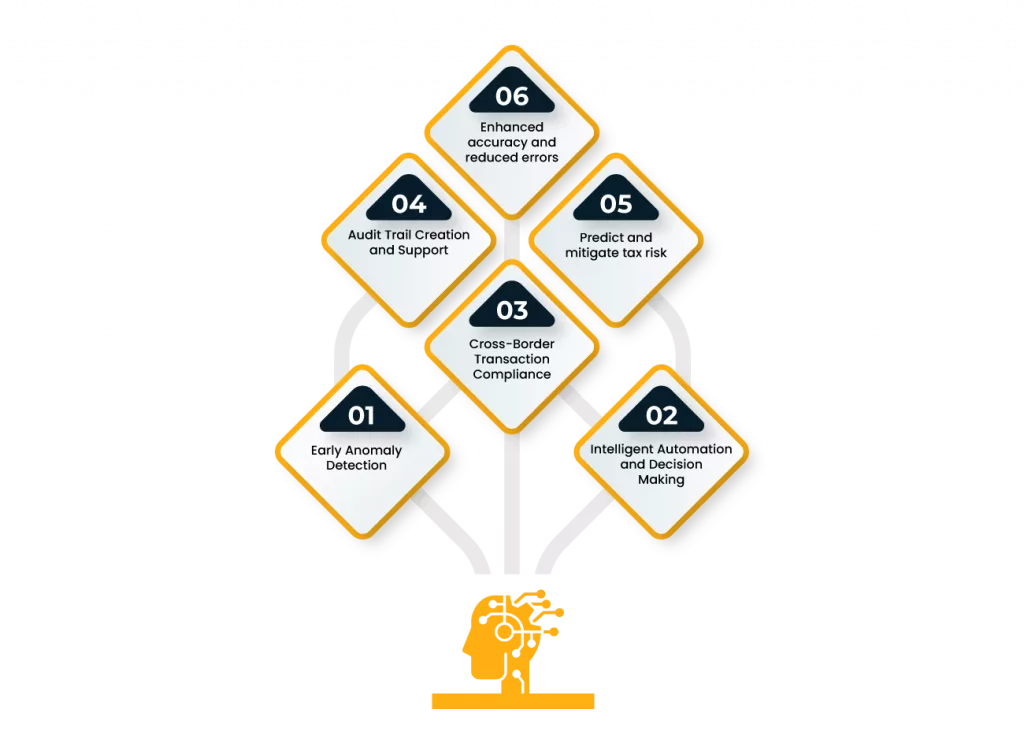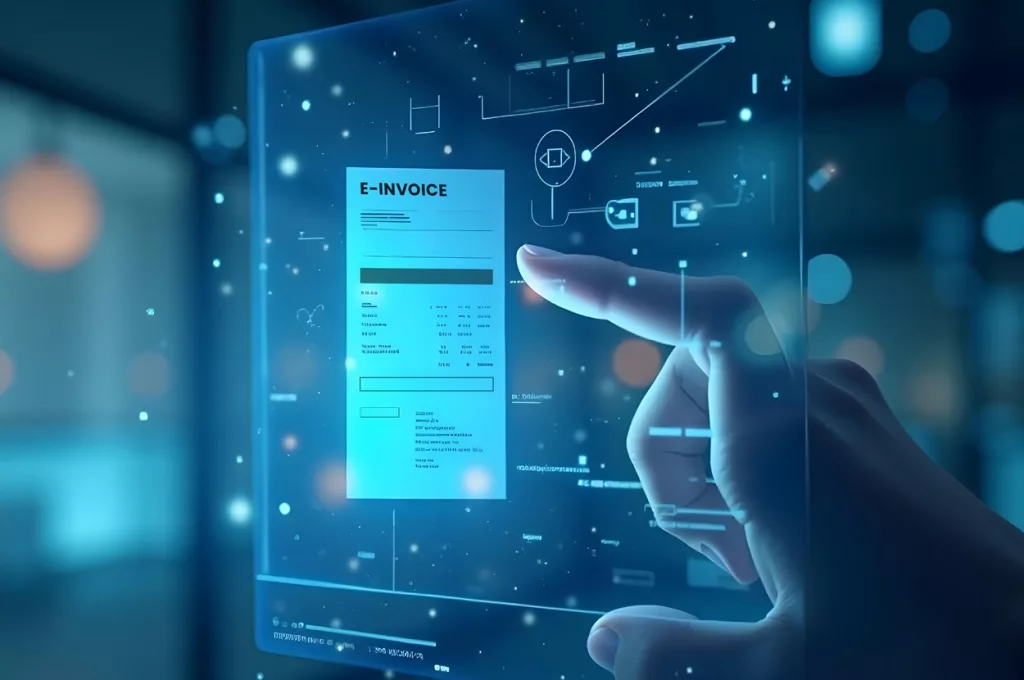The midnight return filing, reviewing every transaction, reconciliation mismatch, invoice validation, vendor tracking, manual hours of correcting, and then comes the significant penalties and the loss of Input Tax Credit (ITC).
For many businesses, indirect tax compliance feels like a race against time, one that they have to chase every month. However, AI in tax has taken the lead in compliance. Companies are now transitioning from a traditional reactive approach to predictive tax compliance models, which anticipate and resolve potential issues or errors before they escalate.
According to the Thomson Reuters 2024 Future of Professionals Report, 75% of corporate tax team respondents cited efficiency as the top priority, with AI-powered automation handling 10% to 50% of tax department work processes, including data entry, document review, and compliance checks. This reduces manual effort and minimizes errors in GST filing and invoice validation. (Source)
This blog will explore what AI-powered predictive indirect tax compliance is, the challenges of manual compliance, a global view on AI-driven tax compliance, and strategies for transitioning from reactive to predictive tax compliance.
The Hidden Cost of Manual Indirect Tax Compliance
Managing indirect tax compliance manually is time-consuming and costly, especially when it involves significant amounts of data. In most mid-to-large enterprises, a single vendor invoice may be processed by 4–6 systems before it is finally paid. Multiply this by thousands of transactions across multiple entities, and the scope of exposure becomes clear.
Furthermore, the government continues to amend and implement rules and regulations, as well as compliance requirements and updates, to streamline the compliance process, align technology, and ensure transparent and accurate real-time or near real-time reporting.
Understanding these updates and amendments and integrating them into business operations can be complex, causing delays and inviting notices and penalties.
Some common challenges that a manual setup may possess:
- Late or missed filings due to human oversight, vendor-side delays, or incorrect data
- Inaccurate tax code classification and GSTIN validation.
- Errors in various reconciliations of ITC and GST payments and return filing.
- Missed reply to notice deadlines.
- Segmented documents requiring manual review and archival during audits and investigations.
- Difficulty identifying frauds and anomalies in business processes and tax compliance.
Difficulty forecasting possible risk, tax liabilities, getting clear insights into unwanted spend, blocked working capital, revenue leakage, etc.
And perhaps, the most damaging challenge is the reputational risk due to audit triggers or regulatory penalties. Teams are stuck pouring countless hours into tedious cycles of checking, escalating, and fixing issues. This is neither sustainable nor scalable.
Keeping these difficulties in view, the requirement for AI-based tax compliance automation solution is more urgent than before, offering real-time tracking of transactions, identification of patterns, and prevention of errors on a proactive basis.
What is AI-powered predictive Indirect Tax Compliance?
AI-powered predictive indirect tax compliance integrates Artificial Intelligence tools for compliance and operations of indirect taxes such as GST, VAT, and sales tax by automating process workflow and repetitive tasks and predicting compliance requirements and anomalies well in time to save businesses from fines and penalties.
Using Tax AI enables businesses to go beyond solving problems and build a strong compliance system that works all the time.
Predictive AI in tax compliance does more than fixing errors. It prevents them from happening. Predictive compliance is not just about meeting compliance requirements; it involves CFOs and tax heads in informed decision-making and financial management.
AI in tax involves the application of various subset or type of artificial intelligence such as large language models, generative AI, agentic AI, machine learning, natural language processing, and data analytics to analyze historical data, compliance and transaction patterns, regulatory changes to forecast tax liabilities, compliance loopholes, predict risk, and ensure compliance with local and international regulations.
From Reactive to Proactive: How AI Transforms Indirect Tax Compliance

1. Early Anomaly Detection
AI tools continuously check and monitor your tax compliance data in real time, including inward and outward invoices and various other documents, ledgers, and returns, and detect mismatches, errors, duplicate entries, invalid GSTINs, and more.
This drastically reduces the risk of last-minute surprises and preserves the integrity of your indirect tax compliance.
2. Intelligent Automation and Decision Making
Modern AI-enabled tax automation tools use your past filings and compliance activity as training data.
Over time, AI can drive improvements across predicting risk levels, classification of data for specific purposes, detecting fraud, and automated alerts or flagging discrepancies to authorized persons for human review.
3. Cross-Border Transaction Compliance
AI ensures seamless compliance for cross-border transactions by automating application of jurisdiction-specific rules, custom duties, GST/VAT, currency exchange rate, e-invoicing requirement, etc., in real-time.
AI analyzes transaction data, its origin and destination, product or service type, and determines correct tax treatment for international transactions.
4. Audit Trail Creation and Support
AI maintains tamper-proof, detailed audit trails of all tax-related transactions and compliance activities, simplifying regulatory audits and ensuring transparency.
5. Predict and mitigate tax risk
ML can analyze past patterns, errors, and historical compliance errors that lead to notices and demands, such as incorrect rates, undisclosed transactions, missing invoices, return filing discrepancies, etc., and ensure such risks are mitigated on time.
6. Enhanced accuracy and reduced errors.
AI helps automate report generation, return filing, and documentation, thereby reducing manual errors and associated costs.
Leveraging AI for Global Tax Compliance
Keeping up with tax laws and frequent regulatory changes across various regions is like trying to hit a moving target.
For big companies operating globally, sticking to old-school manual methods just doesn’t cut it anymore. The risk of hefty fines or a damaged reputation is too high.
For example, introduction of e-invoicing in various countries with their jurisdiction-specific rules, ViDA in EU, and multiple changes such as implementing IMS, ISD, etc. in India. There are different regulatory changes companies may face on a regular basis.
Further, handling notices and demands of various jurisdictions can shake companies’ regular operations as the teams run around collecting fragmented documents, understanding their law, and dealing with deadlines.
Without AI and automation, regional teams are stuck digging through local data, understanding laws and compliance requirements of those regions, writing long reports, and translating them for head office. It’s slow and tedious.
By leveraging AI tools, it automates data management, automates routine tasks, provides insights and customized reports, and monitors regulatory updates instantly with accuracy and efficiency.
How Cygnet is Helping Enterprises in the AI realm
At Cygnet, we’re redefining tax compliance with our AI-powered solution, empowering enterprises, including MNCs, to master global tax challenges and seamlessly integrating with authority Portals, ERPs, e-invoicing platforms, and other systems required for smooth and end-to-end automated workflow.
Cygnet One automates end-to-end indirect tax compliance, including GST/VAT, e-invoicing, etc, by ensuring proper tax determination, classification, and jurisdictional mapping before generating e-invoices, reducing errors and manual interventions.
Cygnet deploys AI-led analytics to scan millions of documents with over 400 error-checking mechanisms, ensuring predictive features of flagging discrepancies, sending alerts, thereby minimizing errors, validating data, and guaranteeing audit-ready documents.
By automating processes like accounts payable, return filing, and various reconciliations, Cygnet reduces manual effort by up to 4-8 person-months, ensuring enhanced efficiency.
Cygnet’s solutions build on Cosmos framework, support businesses in navigating the complexities of global tax ecosystems. The platform’s PEPPOL certification further enables seamless e-invoicing for cross-border transactions, ensuring compliance with international standards.
Conclusion
Imagine a world where tax compliance isn’t a frantic race against midnight deadlines but a seamless mixture of precision and foresight. AI-powered indirect tax compliance is rewriting the rulebook by turning chaos into efficiency. AI tools are here to help organizations stay ahead, turning tax compliance into a strategic advantage. It’s about time organizations understand and adopt the new era of proactive compliance driven by AI.











